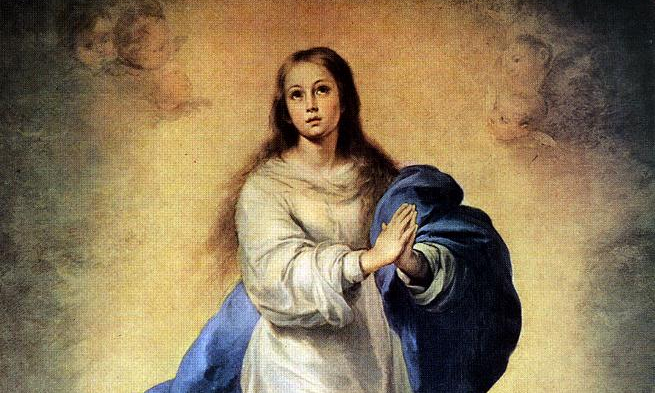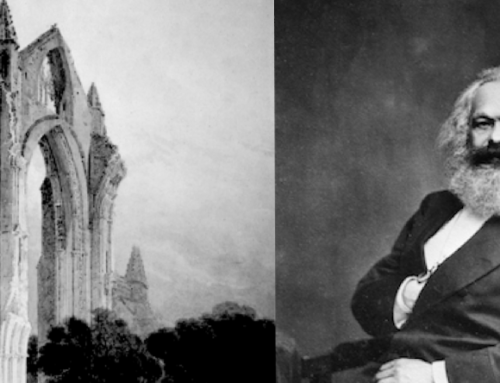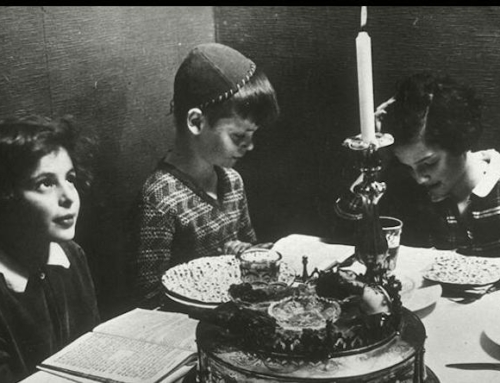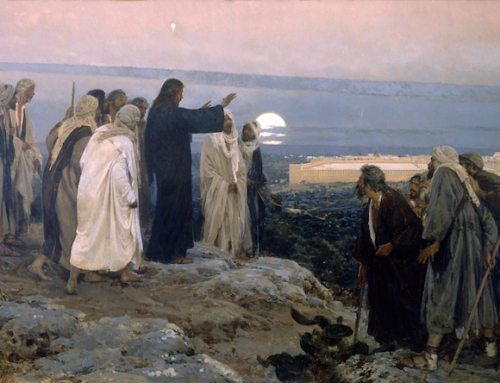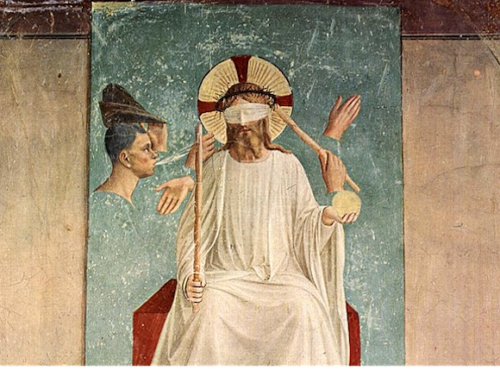The Immaculate Conception follows me wherever I go. The school I attended as a boy was under the patronage of the Immaculate Conception. So too was my home parish, the Cathedral of the diocese. Now I live in the Priory of the Immaculate Conception and attend classes at the Pontifical Faculty of the Immaculate Conception. Every couple of weeks or so I cross the street and visit the largest Catholic church in America, the Basilica of the National Shrine of the Immaculate Conception. Like I said, she’s everywhere.
Apparently, from the late nineteenth century through the first half of the twentieth, when all the aforementioned institutions were founded, people were especially excited about this new title for the Mother of God. Not long before, in 1854, after consultation with the world’s bishops, Bl. Pope Pius IX issued the encyclical Ineffabilis Deus, in which he defined the dogma of the Immaculate Conception in the following terms: “the most Blessed Virgin Mary, in the first instance of her conception, by a singular grace and privilege granted by Almighty God, in view of the merits of Jesus Christ, the Savior of the human race, was preserved free from all stain of original sin.” As the titles of schools and Churches indicate, the dogma was well promoted among the Christian faithful. In fact, it was promoted in a marvelous way by the Immaculate Conception herself.
On February 11, 1858, the Blessed Mother began appearing to a poor, fourteen-year-old girl named Bernadette Soubirous in a small town in southwestern France called Lourdes. Over a span of about six months, she appeared to Bernadette eighteen times. A miraculous spring of water gushed forth from the place of the apparitions, and a young mother was healed of paralysis in one of her hands. The vision asked for prayer and penance and that a chapel be built on the spot. The number of onlookers that accompanied the girl to the site steadily grew from eight to eight thousand.
Initially Bernadette identified the apparition only as the Lady in White or Aquéro (“that one,” in the local dialect), though almost from the beginning townspeople and even the local newspaper reported that the supposed visions were of the Blessed Virgin Mary. It wasn’t until the third-to-last apparition that Bernadette received an answer to her requests for the woman’s name, and even then she seems not to have understood the meaning of the response: “I am the Immaculate Conception”—or, in the dialect that Mary used, “Que soy era Immaculada Concepciou.”
Born without original sin, Mary is the new Eve. But while Eve was deceived by the serpent to believe that God did not have her best interest in mind, Mary had the right idea about the divine goodness and saw that obedience to God was conducive to her complete happiness. Kept free from sin, she shows that human beings are not unavoidably destined for evil, that God did not rig the game against Adam and Eve. In Mary, through the grace of Christ, the human person, made in the image of God, is brought to perfection, and God’s goodness is put on display. As Fr. Peter John Cameron puts it, “Mary the Immaculate Conception is the means by which God communicates how he conceives of his own holiness.”
For St. Bernadette, it was easy to see the goodness of God in the luminous smile of Our Lady of Lourdes. Today, the town of Lourdes receives about 5 million pilgrims each year. They come to seek cures, to do penance, and mainly to encounter the goodness of God in the beautiful smile of the Immaculate Conception.
As I write this post, a sister of one of the Brothers has announced that she’s going to Lourdes and has offered to bring petitions to be placed under the patronage of Our Lady. So I wrote down a few things. Like I said, the Immaculate Conception follows me everywhere—even from France! Sure, we are the ones who go on pilgrimage, but only because she appeared at Lourdes first, coming to us through St. Bernadette, through the Pope and the Bishops, through religious institutions, through books and movies, pilgrims that we know, blogs that we read, rosaries that we pray. Through the goodness of God, she follows us everywhere.
✠
Image: Bartolomé Esteban Murillo, Immaculate of El Escorial

